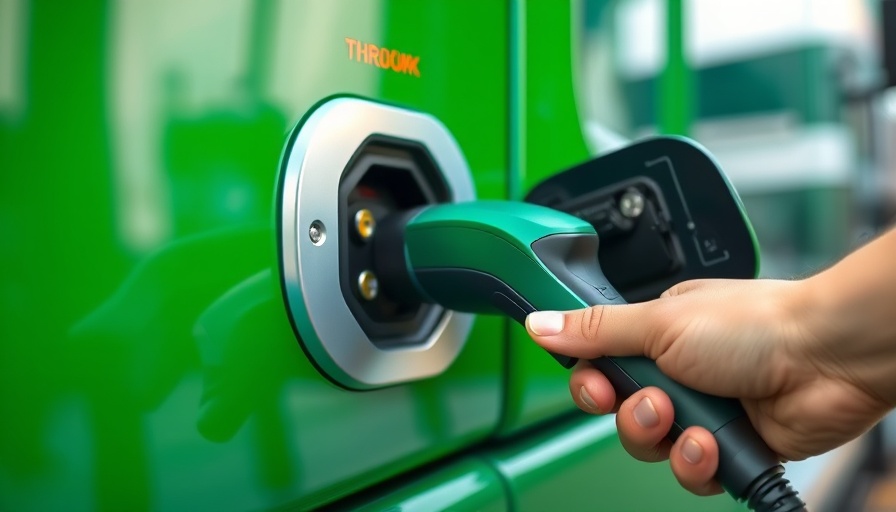
UK’s Electric Vehicle Infrastructure Takes a Giant Leap Forward
The UK is on the cusp of a major transformation in its electric vehicle (EV) infrastructure, particularly for heavy goods vehicles (HGVs). As environmental concerns gain prominence and the deadline for phasing out non-zero-emission vehicles by 2040 looms nearer, service operator Moto has unveiled ambitious plans to establish an expansive network of truck charging 'superhubs' across the UK motorways.
Breaking Ground: What the Superhub Network Entails
Over the next five years, Moto aims to launch 15 charging superhubs, with plans to expand this to 23 hubs by 2030. This network is intended to provide a much-needed boost to the currently sparse charging infrastructure available for commercial electric vehicles, which remains limited with fewer than five dedicated charging locations across the nation.
The initial phase of this rollout includes two charging hubs set for construction in Exeter and Tamworth, starting in April. When fully operational, the Moto network will feature over 300 dedicated charge points capable of serving up to 5,000 electric lorries. Significantly, this initiative is projected to reduce annual carbon emissions by as much as half a million tons, underscoring the role of electric HGVs in minimizing the transportation sector's environmental footprint.
Why Infrastructure Development Matters Now
The urgent need for enhanced commercial charging infrastructure cannot be understated. Presently, the majority of public EV charging options cater primarily to passenger vehicles. While Moto currently provides around 600 high-powered chargers for such vehicles, there is an evident disparity in facilities available specifically for HGVs. The lack of adequate charging points contributes to a declining trend in the demand for electric HGVs, which saw a troubling drop of 7.3% in the fiscal year 2023-2024.
Moto’s CEO, Ken McMeikan, stated, “This critical infrastructure will unlock electric freight growth for the UK economy.” His words reflect a broader industry perspective on the vital role that a robust charging network plays in facilitating the adoption of electric freight solutions.
The Bigger Picture: Other Key Initiatives in the UK
While Moto's plans are certainly significant, it is essential to recognize that they represent just a portion of the broader initiative to adapt to the rapidly evolving landscape of electric transportation. For instance, another initiative from Milence has already opened a charging hub at Able Humber Port, showcasing charging technology that aligns with the European Commission’s push for sustainable logistics.
This initiative is part of a larger partnership between leaders like Daimler, Volvo, and Traton, committed to deploying at least 1,700 high-powered charging points throughout Europe by 2027. Such collaborative strategies signify a shift towards comprehensive infrastructure improvement to meet the burgeoning demand for electric commercial transportation.
Future Trends and Predictions for Electric HGVs
As Moto and other organizations forge ahead with their expansion plans, several trends are likely to shape the future of electric HGVs in the UK. Environmental regulations will continue to tighten, pushing companies and logistics operators towards greener alternatives. Enhanced battery technology, coupled with innovations in charging speeds, is also expected to make electric HGVs more appealing to fleet operators.
Further, as the network of charging superhubs grows, it will likely lead to enhanced operational efficiency for freight companies, reducing downtime in loading and unloading. This transformation will not only have economic implications but also contribute to achieving the UK’s carbon neutrality goals in the transportation sector.
Why Knowing This Matters to All Stakeholders
For businesses, understanding the scale and implications of Moto's charging superhub initiative is vital for strategic planning and adaptation in the face of evolving regulations. Fleet owners and logistics managers should be aware of these developments, as they may impact operational costs, compliance mandates, and overall sustainability initiatives.
The establishment of a reliable infrastructure not only benefits commercial transport operators but also fosters public trust in electric vehicles, setting the stage for a more sustainable future. As consumers and businesses alike become increasingly environmentally conscious, initiatives like Moto’s are fundamental in driving the narrative of responsible transportation.
In conclusion, the formation of a robust HGV charging network will not only enhance operational capabilities for transport businesses but also contribute significantly to the UK’s climate goals. As we move toward a future of electric transportation, stakeholders from diverse sectors must collaborate and engage with these transformative projects. The journey toward sustainable transport is just beginning, and it promises to reshape the narratives of logistics and environmental stewardship in the years ahead.
Join the Charge Towards an Electric Future!
Encouraging further adoption of electric vehicles can start with understanding these initiatives. As we witness the landscape of EV infrastructure evolve, businesses, stakeholders, and consumers alike are invited to participate in building a greener future. Advocate for sustainable practices and consider the benefits of electric transportation for your operations. The movement toward sustainability is more than a necessity; it's a collective responsibility.
 Add Row
Add Row  Add
Add 



